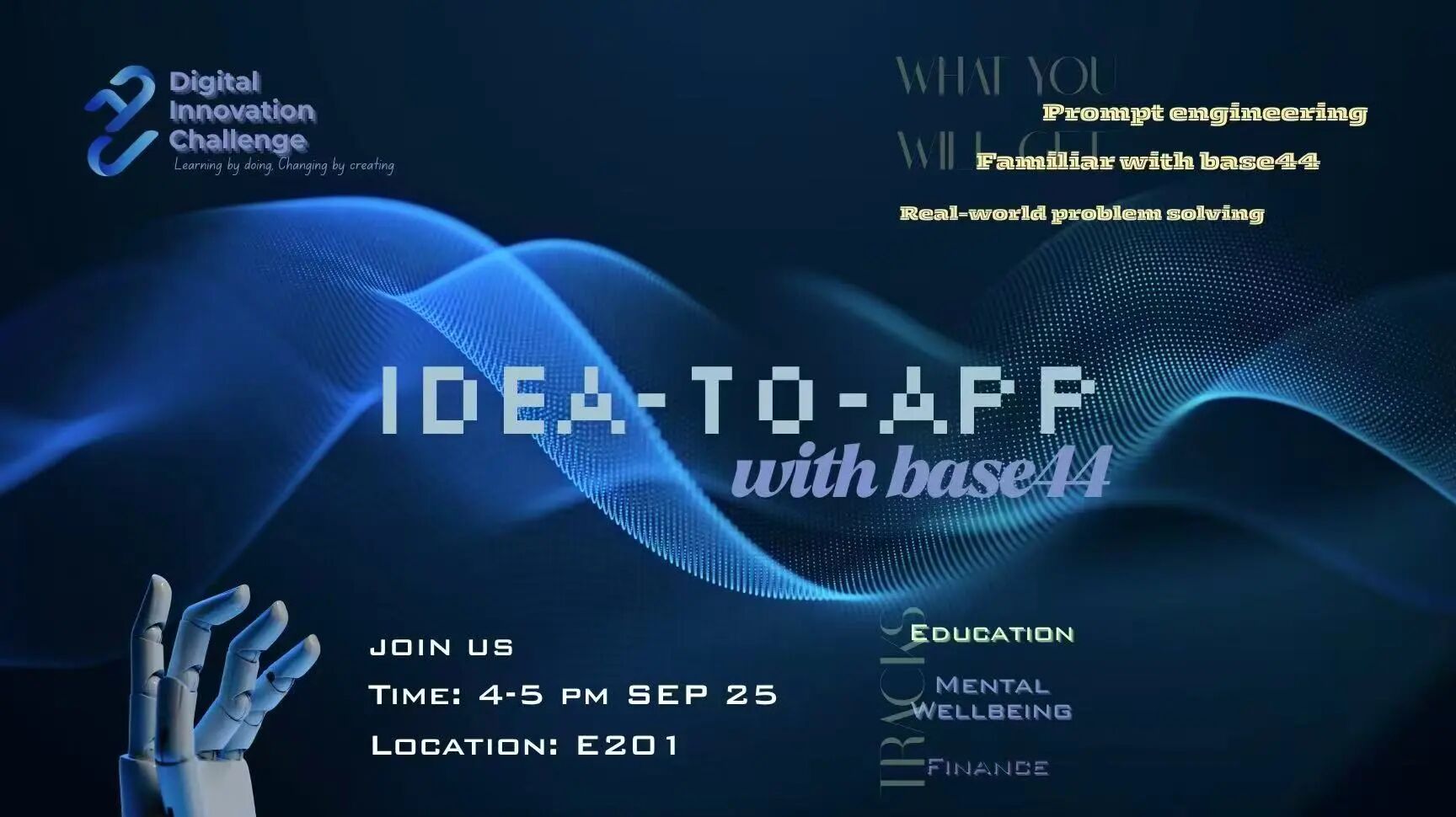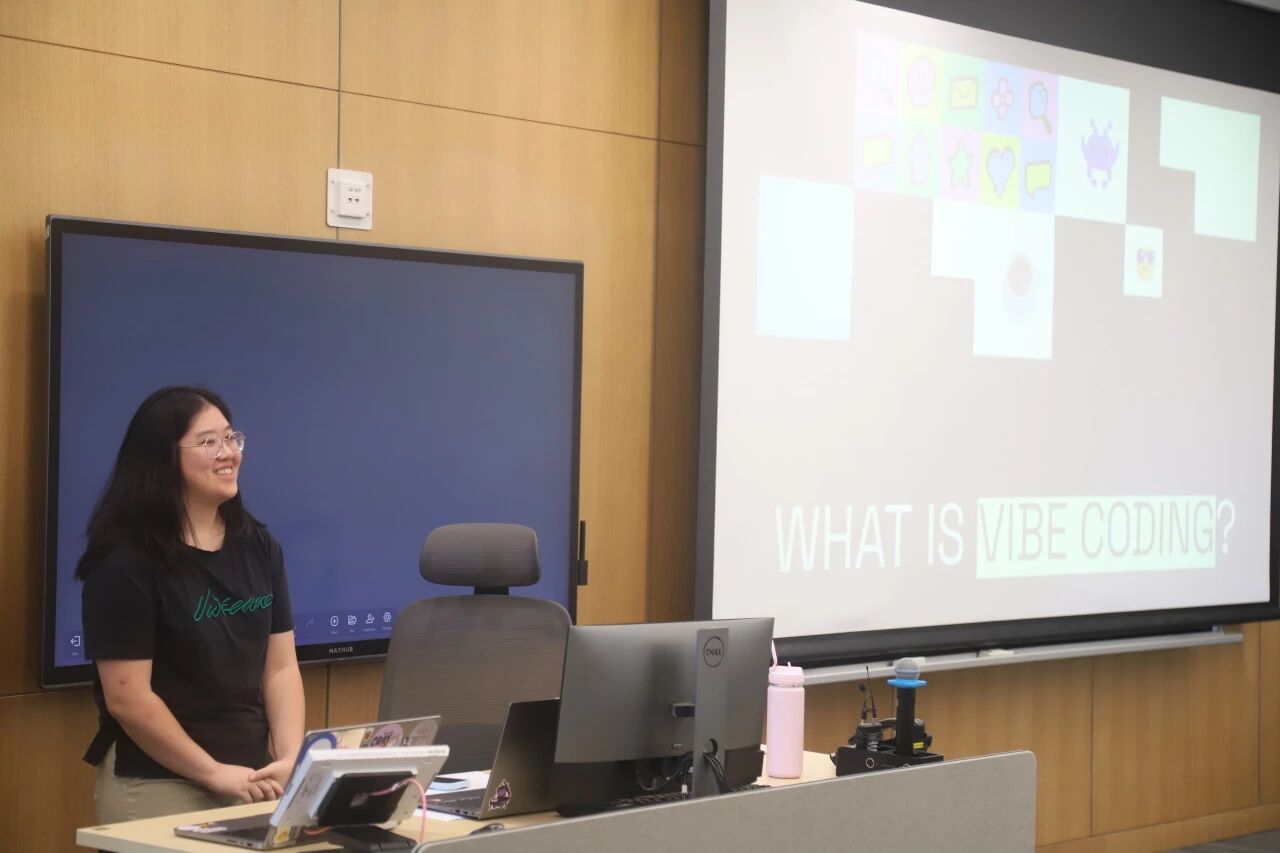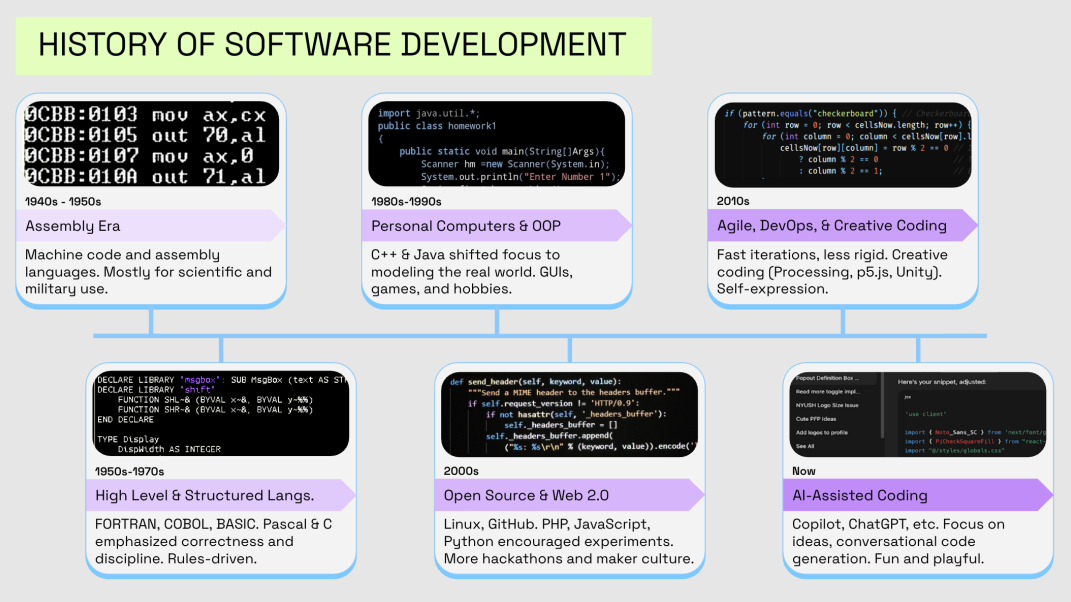2025-09-25 · Digital Innovation Challenge 2025 · Idea-to-App with base44
Event Review
Vibe Coding Sharing
The event will kick off with senior student Ashley Chen sharing the story and cases of Vibe Coding, allowing everyone to explore this new way of programming in a relaxed atmosphere.
What is Vibe Coding?
Coined by Andrej Karpathy, vibe coding refers to programming through natural language with the help of AI. Instead of writing every line of code, you simply describe your ideas, and large language models generate and refine the code for you. It follows a “code first, refine later” approach, making coding more intuitive and accessible.
How It Differs from Traditional Coding?
Traditional coding emphasizes precision, logical structure, and full control over performance. Vibe coding, by contrast, is more conversational and hands-off—you focus on ideas while AI handles the implementation. This makes it ideal for rapid prototyping, creative projects, and early-stage exploration.
Why It Matters?
Vibe coding empowers both beginners and experts to bring ideas to life at lightning speed. By lowering barriers, it makes coding playful, collaborative, and more widely accessible. Tools like GitHub Copilot, Claude, and Codex are shaping a future where intentions translate directly into working software.
History of Software Development
Conclusion
Vibe coding is not just a tool—it’s a shift in how we think about creation, innovation, and the role of code itself.
Prompt Crafting
Within groups, participants turn ideas into prompts, using language to guide AI as creativity gradually takes shape. They then divide into subgroups, exploring entry points in areas such as education and finance to develop their projects. The final results appear as app prototypes, with each team showcasing their work and turning inspiration into reality.
Methodology
-
Feature Design
Define core requirements and structure information from overview to detail, ensuring a clear layout. -
Prompt Writing
Translate design concepts into concise textual instructions to guide AI in producing the desired layout and content. -
AI Generation & Iteration
Input prompts into Base44, generate prototypes, and iteratively refine interface, categories, and interactions until the final product is realized.
Presentation of Outcomes
1. SpendSmart
A group of students developed SpendSmart using Base44 to facilitate efficient management of income, expenses, and budgets. The homepage clearly presents monthly spending, remaining budget, total budget, and recent transactions, with Quick Actions providing convenient operational access. Users can Add New Expense by entering the description, amount, category, payment method, and date, while budget progress bars update in real time, offering a clear overview of expenditures and supporting effective budget control. The interface is concise, well-structured, and user-friendly.
2. EduCommunity
Another group of students developed EduCommunity using Base44 to provide an efficient and convenient educational platform. The homepage features a course catalog, search functionality, category filters, and access to the learning community, allowing users to quickly find courses that match their learning goals. Each course clearly displays instructor information, course description, duration, participant count, and rating, helping learners make informed choices. Users can create new courses, join the community, or browse resources. The interface is clean, well-structured, and easy to navigate, supporting learning, sharing, and fostering knowledge growth and interaction.
| Copywriting | Terrence, Feiya |
| Layout | Feiya, Terrence |
| Images | Runzhang |
| Review | DIC 2025 |



